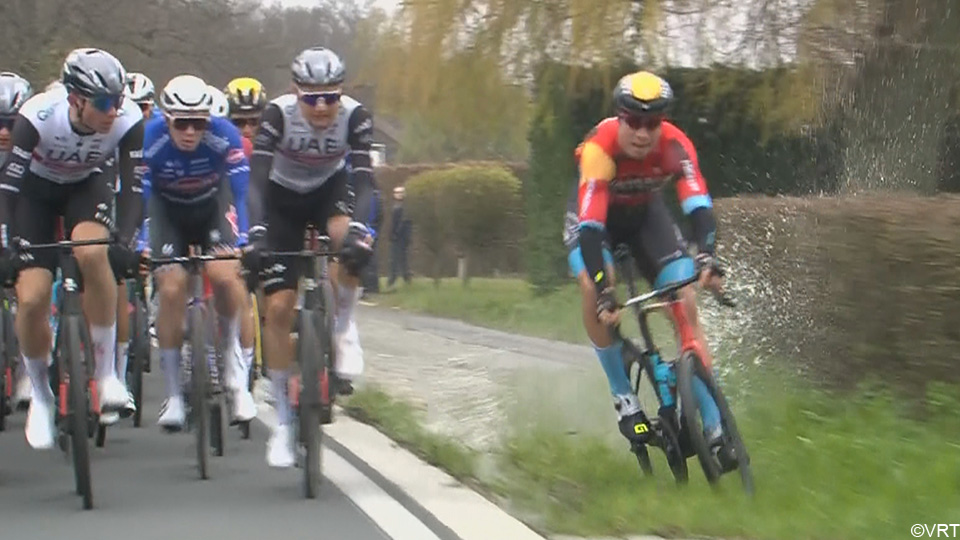UCI to investigate massive Tour of Flanders crash, road-blocking team tactics
'We want to set an example' says UCI official

The UCI have confirmed they are considering further disciplinary action against Bahrain Victorious rider Filip Maciejuk after he sparked a huge crash during Sunday’s Tour of Flanders.
Maciejuk was seen moving up along the side of the road with 140 km to race. He then rode into a deep grass section, lost control of his bike and swayed across the road into the peloton.
His move sparked off a domino effect of crashes across the road, with numerous riders going down.
Wout van Aert (Jumbo-Visma) was among the riders to crash although he quickly remounted and rejoined the peloton. Former winner Peter Sagan (TotalEnergies) was forced to abandon early in what was his final Tour of Flanders, while Tim Wellens (UAE Team Emirates) was left with a badly fractured collarbone and Ben Turner (Ineos Grenadiers) fractured his left arm.
The video referee (VAR) reviewed the video footage of the incident and Maciejuk was disqualified before the race had finished. He quickly apologised on social media but the UCI is considering further action.
“We want to set an example,” UCI coordinator Peter Van Den Abeele told Sporza.
“His manoeuvre was absolutely wrong. You can never jeopardise the safety of your fellow riders.”
Get The Leadout Newsletter
The latest race content, interviews, features, reviews and expert buying guides, direct to your inbox!
“Further measures could definitely follow. He will appear before the disciplinary committee. A possible suspension and/or additional fine is then not excluded. We can’t let this pass.”
For years, riders have used gutters, footpaths, bike paths and even the dirt sections along the edge of roads to find an advantage and move up in races. However crashes and the dangers to the public have forced the UCI to introduce stricter rules and punishments.
“We were criticised when we introduced the rule against riding on a footpath, but the consequences [on Sunday] were significant for riders like Tim Wellens,” Van Den Abeele pointed out.
“It is a negative trend and we need to get rid of it. We want to set an example and send a signal to the riders that we are all responsible for safety.”
The UCI also confirmed it will look at DSM's use of what the Flemish media later described as a ‘Catenaccio’ tactic during the Tour of Flanders.
With some 126 kilometres to go on the Kortekeer climb, DSM's John Degenkolb and four of his teammates massed at the front of the peloton. They then slowed to a walking pace, forcing some riders to put a foot down, before accelerating on the front of the peloton. The tactic did not effect the race's development but garnered lots of criticism on social media.
Mathieu van der Poel posted a video of the moment the squad massed on the Kortekeer on Twitter with a sarcastic "Chapeau Team DSM" comment, and Eddy Merckx called it "dangerous". Cyclingnews columnist Fabian Cancellara also contrasted the tactic with the absence of any DSM riders at the top of the results sheet.
Trek-Segafredo tried a similar move during Dwars door Vlaanderen on the same climb but now the UCI will investigate.
"We have also noticed this trend," Van Den Abeele said.
"We will analyse that tactic in more detail. Everyone must be able to defend their chances, but this strategy is very far-reaching."

Stephen is one of the most experienced member of the Cyclingnews team, having reported on professional cycling since 1994. He has been Head of News at Cyclingnews since 2022, before which he held the position of European editor since 2012 and previously worked for Reuters, Shift Active Media, and CyclingWeekly, among other publications.